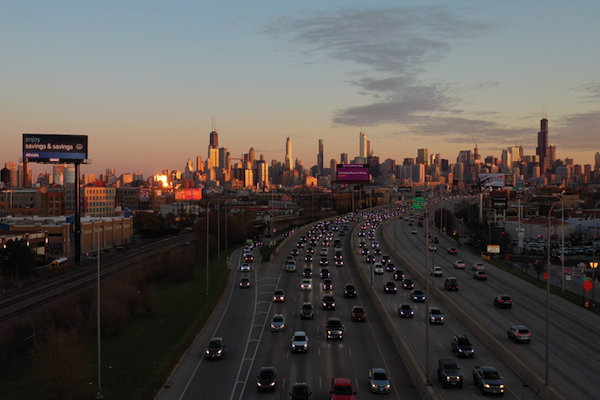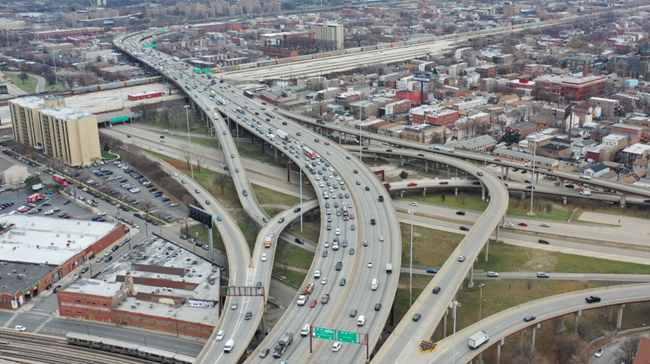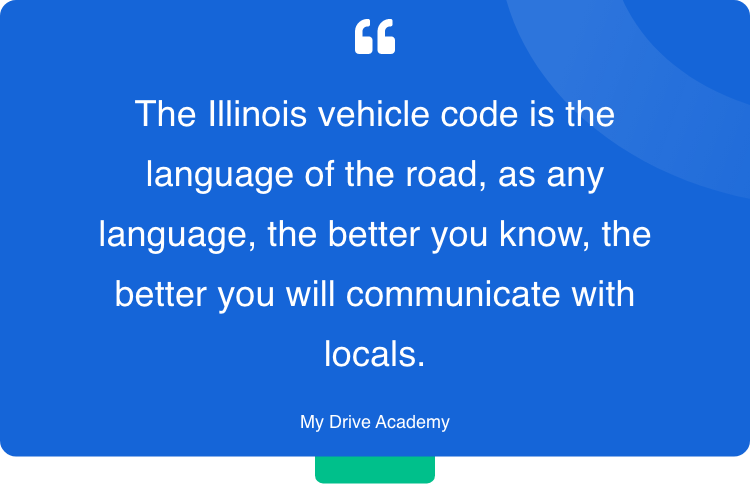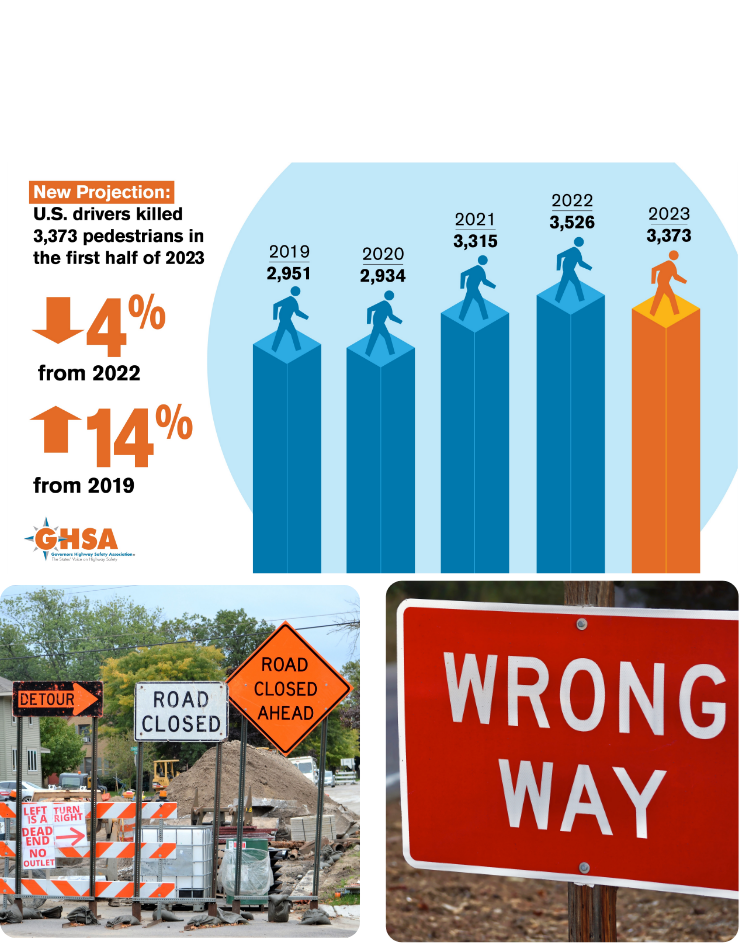10 Tips for Driving in Chicago
Whether you’re a newcomer, a tourist, or a teenager gearing up to navigate the bustling streets of Chicago for the first time, the insights shared in this article provide great advice to do so.
According to the Rules of the Road book, Illinois continues to be a national leader in traffic safety. Over the last decade, traffic fatalities in our state have declined significantly. This is due in large part to innovative efforts to combat drunk and distracted driving, as well as stronger guidelines for new teen drivers.
The driving public’s increased awareness and avoidance of hazardous driving behaviors are critical for Illinois to see a further decline in traffic fatalities. For this reason, we list below the 10 tips that, as an accredited driving school, we have seen are the most critical for a pleasant first driving experience within the city of Chicago.

10 Tips for Driving in Chicago | New drivers
1. Learn and follow the traffic laws
From monitoring your vehicle’s status to handling a police stop, familiarizing yourself with the complete Illinois vehicle code is essential. Just as fluency in a language enhances communication with locals, knowing the rules of the road enhances your driving experience.
If you don’t have the time necessary to read the entire code, you can watch this 2-hour video course where we’ve distilled the key rules you need to follow to navigate the roads trouble-free and ensure your driving experience goes with flying colors.
2. Look out for pedestrians
Chicago is renowned for its busy traffic, often filled with drivers from various cities, countries, and countless tourists navigating its main streets and avenues, this dynamic environment underscores the importance of exercising caution, particularly when driving downtown. One crucial measure to mitigate the risk of accidents involving pedestrians or cyclists is to yield the right of way constantly, even when it’s technically ours. Furthermore, extra vigilance is required when making right turns, as pedestrians frequently cross streets without fully adhering to traffic signals.
3. Merge the highway properly
Even though highway driving is actually safer than driving on city streets or rural roads, it is more stressful for drivers because traffic moves much faster. To be a low-risk driver on highways, you need to learn skills that keep you safe as you enter, drive on, and exit highways. Safe driving demands that you manage visibility, time, and space expertly.
Adjusting your speed is critical to timing a smooth entrance into traffic. A closed front zone may cause you to reduce your speed and select a new gap. Accelerate to reach traffic speed. Check your rear zone and establish lane position and a safe following distance. Once on the highway, stay alert as you adjust to the constantly changing traffic scene.

Practical advice for driving in Chicago in 2024
4. Make sure you know parallel parking
Parallel parking is by far the most common kind of parking within the city, poor handling of this skill could put you in an uncomfortable situation and wasting of time for you and other road users, so we share this video where you will find a practical way to park in parallel in a few seconds.
If you’re parallel parking right at this moment, follow the next steps:
- Evaluate the parking space to be sure it is legal and clear of objects.
- Turn on your parking lights and stop about three feet away from parked cars.
- Pull forward so that your rear bumper is even with the rear bumper of the vehicle parked in front of the space you want to enter.
- Back slowly, controlling speed with your brake. When the back of the passenger’s seat is even with the rear bumper of the front vehicle, straighten the wheels.
- When your front bumper is even with the front vehicle’s back bumper, turn the wheel sharply left towards the street. Straighten your tires and center the car when your vehicle is parallel to the curb.
5. Don’t use your cell phone while driving
Although using your mobile device in hands-free mode is allowed, as long as you are an adult, according to the Illinois Vehicle Code the use of an electronic communication device while operating a motor vehicle is an offense against traffic regulations governing the movement of vehicles. A person who violates the governing provision shall be fined a maximum of $75 for a first offense, $100 for a second offense, $125 for a third offense, and $150 for a fourth or subsequent offense. Effective July 1, 2019.

6. Be careful and respect traffic signs.
In the United States, the stop sign means stop. You are expected to completely stop your vehicle for 3 seconds and then proceed carefully. First in – first out, in general by applying this simple trick you will have no trouble in street corners. Also, look at the markings on the road, remember that the white line means that you are traveling on a street with one-way traffic while the yellow line means two-way traffic.
A traffic sign that you should pay critical attention to is the wrong-way sign. Many traffic accidents on the highway can be avoided by properly recognizing this traffic sign.

7. Look up for construction zones
Just as it happens in many countries, traffic signs in the USA are color coded, when we talk about construction the color is orange. An orange construction sign alerts you that you are about to enter a work zone. Be ready to slow, stop, or drive around workers and equipment. In addition to the signs posted, you must also follow directions from any worker directing traffic. Many states now increase fines for violations in construction zones.
8. Practice Defensive Driving
Manage risk with SPIDE Process and Smith System. As a driver, you’ll be faced with many situations that present some kind of risk. Are you aware of the driver-contributed risks involved in driving? Learning an organized system for driving helps you to understand how to manage risk in order to be a safe driver.
Drivers who use an organized system will be better equipped to manage risk and thus reduce the possibility of damage or harm. Good searching habits and the ability to manage space on the roadway are basic tools for low-risk driving.
9. Take the Lake Shore Drive
Lake Shore Drive is a multilevel expressway that runs alongside Lake Michigan through the city of Chicago. It stretches 15.83 miles from North to South of the city and is often described as the “most scenic roadway in the country” as it embraces the lakefront, the city’s skyline and most major tourist attractions. No other city in the country can match the scenic beauty of Lake Shore Drive. Notable sites along the route are Burnham Park, Chicago Yacht Club, Drake Hotel, Du Sable Park, Grant Park, Jackson Park, Lake Point Tower, Lincoln Park, Montrose Beach, North Avenue Beach, Oak Street Beach, McCormick Place, Navy Pier, Adler Planetarium, Field Museum, Shedd Aquarium, Museum of Science and Industry, Northerly Island, Soldier Field, Promontory Point, Belmont Harbor and Temple Sholom. It’s a true microcosm of Chicago with picturesque postcard pictures.
10. Do not drive without a Valid Driver’s License
Acording to the Secretary of the State, drivers moving to Illinois may use their valid driver’s license from their home state or country for 90 days. You may obtain an Illinois driver’s license if your are planning to stay more than 90 days in the state. Illinois law allows non-visa status individuals to obtain a Temporary Visitor Driver’s License (TVDL)
My Drive Academy is an institution that can help you obtain this and any other driver’s license in the state of Illinois so that you can continue with your daily life without the need to incurring a traffic violation.
